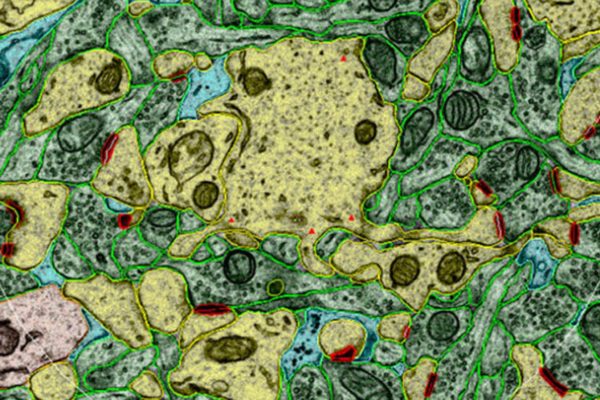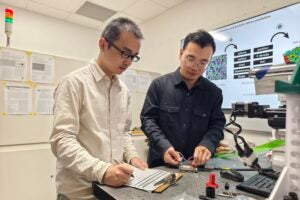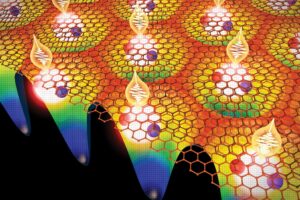AUSTIN, Texas — The National Science Foundation (NSF) has awarded Kristen Harris, a professor in the Department of Neuroscience at The University of Texas at Austin, a $9 million grant to explore the brain in microscopic detail and understand the cell biology of the nervous system. Harris plans to image and map synapses, the tiny points of contact between neurons throughout the brain, in detail and to model synapse function and share the data publically for use by colleagues throughout the world.
Harris says that the funding from NSF’s Next Generation Networks for Neuroscience (NeuroNex) program allows her to expand her expertise through collaborations with James Carson of the Texas Advanced Computing Center and Terrence Sejnowski of the Salk Institute.
“I’ve been working to understand synapse structure and function for my whole academic life. We have created accurate three-dimensional reconstructions of all the synapses and their associated structures (dendrites, axons and glia) using sophisticated electron microscopy. We discovered, for example, that in brain volumes as tiny as a single red blood cell, there are more than 500 synapses,” says Harris. “With this grant, we will collect new images more quickly from a variety of brain regions and taxa from mice to humans and share them more easily with the scientific community.”
Part of the funding is to design a new electron microscope capable of imaging at a greater volume while simultaneously peeking inside the tiniest substructure of individual synapses using a new tomographic approach. As the images are collected, they will be shared with collaborators at the Salk Institute to expand existing and build new computational modeling tools for understanding how synapse ultrastructure supports brain function.
“Our team at the Salk Institute will build a computational microscope to animate the electron microscope data from the NeuroNex project and probe the function of synapses at the molecular level,” says Sejnowski, laboratory head of Salk’s Computational Neurobiology Laboratory and a Howard Hughes Medical Institute investigator.
The images and tools will be shared with the scientific community through a portal being developed at the Texas Advanced Computing Center (TACC).
“Electron microscopy is a powerful tool for understanding the tiny details of the brain that are critical to how advanced organisms learn and remember,” said Carson, a co-primary investigator with Harris and Research Associate in Life Sciences Computing at TACC. “Yet the amount of data collected is not currently limited by the microscope itself, but instead the ability to process the data and interpret it. By leveraging TACC’s high-performance computing, we intend to greatly speed up the rate of knowledge discovery in this field. By creating a public portal for other researchers, we provide the foundation for collaboration and sharing of data and analysis methods, thus further accelerating our ability to learn about how our brains work.”
Students in an undergraduate course Harris is teaching on synapses will help to test the new modeling and reconstruction tools as well as produce some of the data that will be shared in the portal. The educational element also features workshops that will help bring top neuroscience students to UT Austin.
The award to Harris is part of a major public-private joint endeavor, the Brain Initiative, which is pursuing one of science’s grandest challenges: understanding the brain. The NSF states that the overall goal of the NeuroNex program within the Brian Initiative is to establish a coherent national infrastructure to enhance understanding of brain function across organizational levels and a diversity of species. The initiative focuses on interdisciplinary approaches and new technologies, with the promise of ushering in new ways of conducting neuroscience research.
“Through the development of advanced instrumentation to observe and model the brain, we’re closer to our goal of building a more complete knowledge base about how neural activity produces behavior,” says Jim Olds, the NSF’s assistant director for biological sciences. “NeuroNex seeks to take that progress forward by creating an ecosystem of new tools, resources and theories. Most importantly, NeuroNex aims to ensure their broad dissemination to the neuroscience community. With these awards, NSF is building a foundation for the next generation of research into the brain.”




